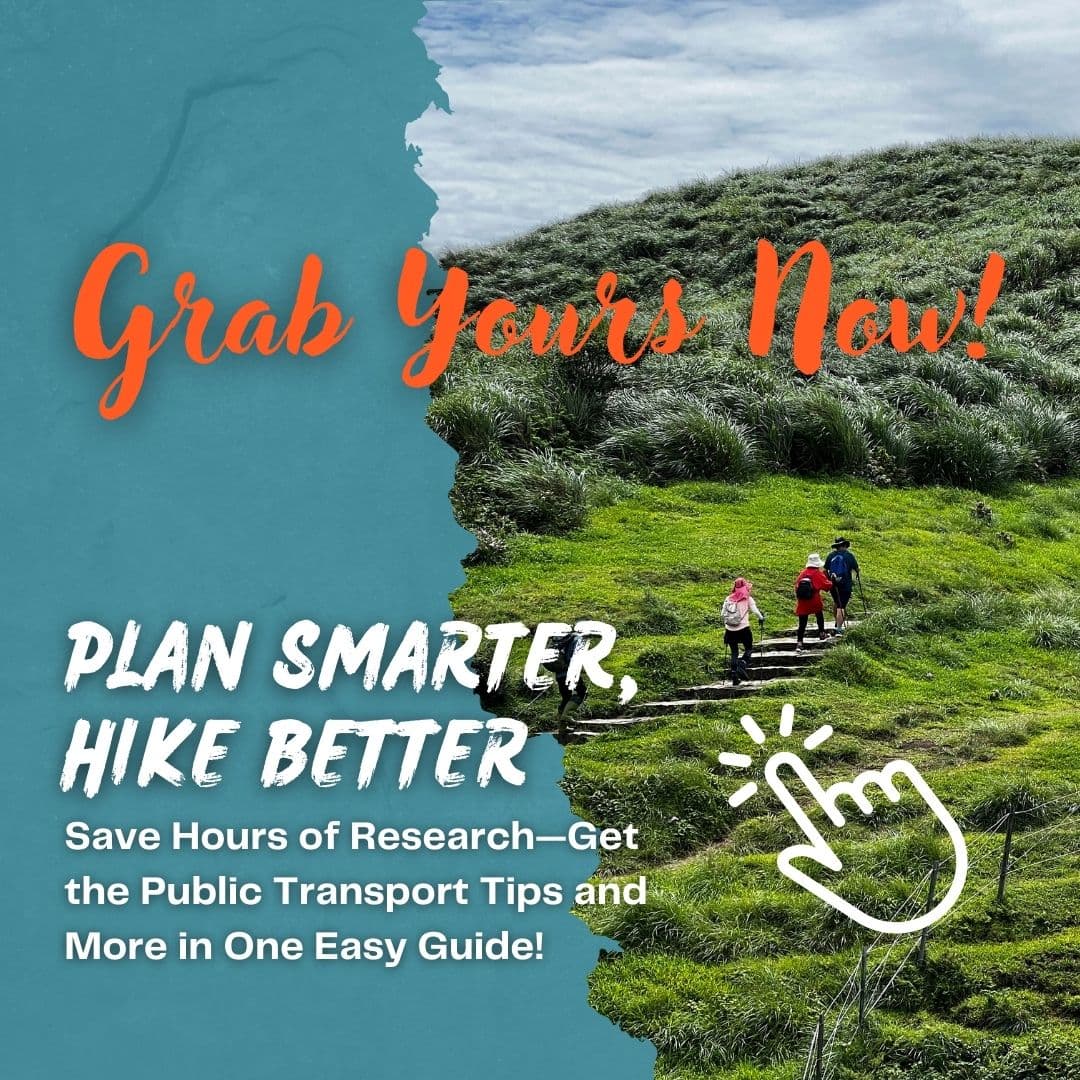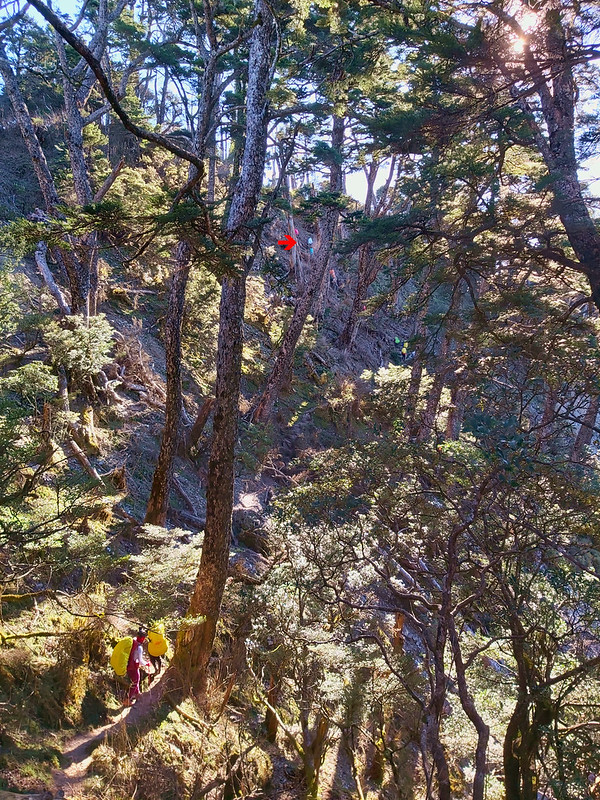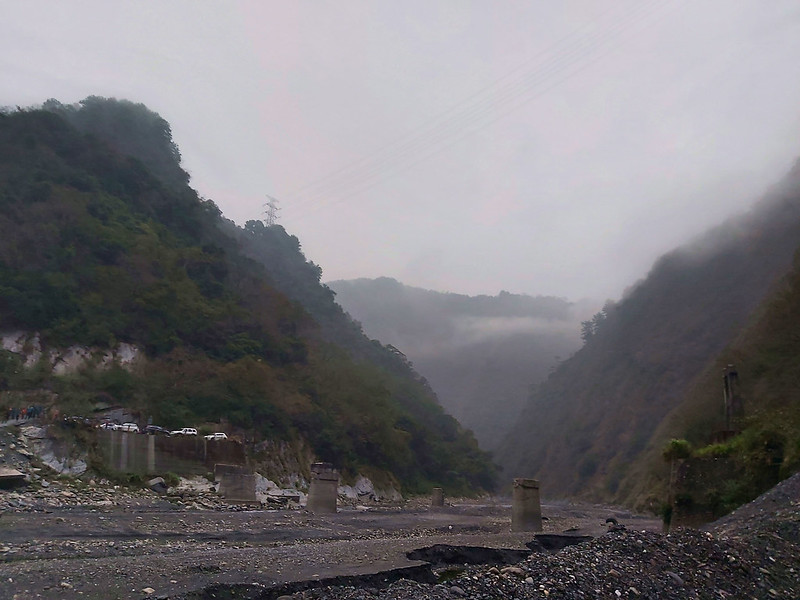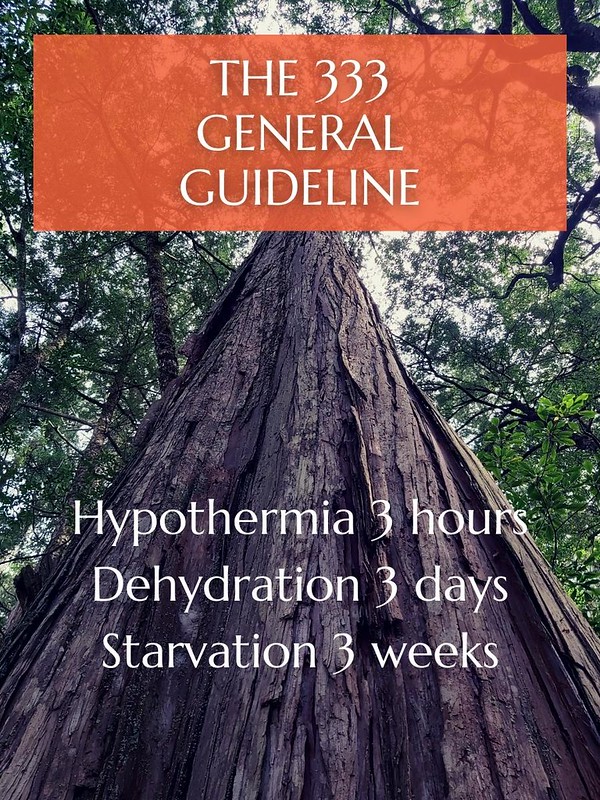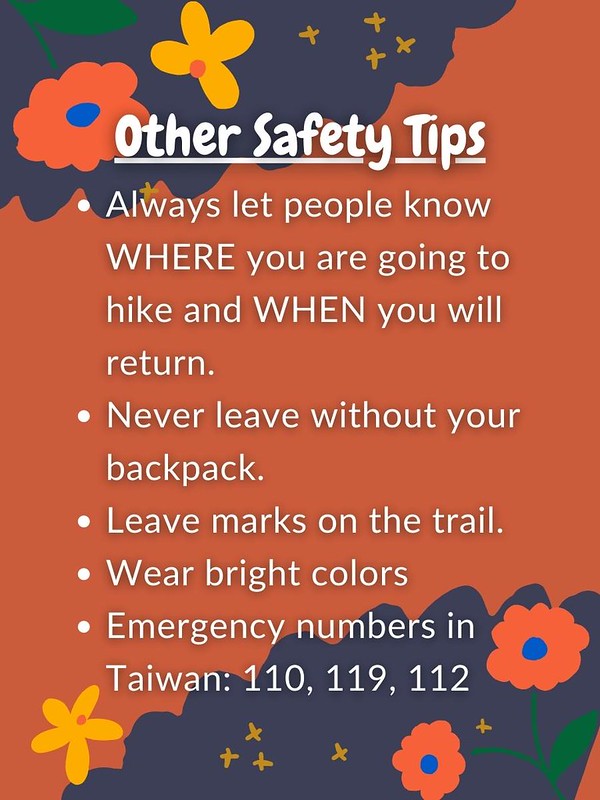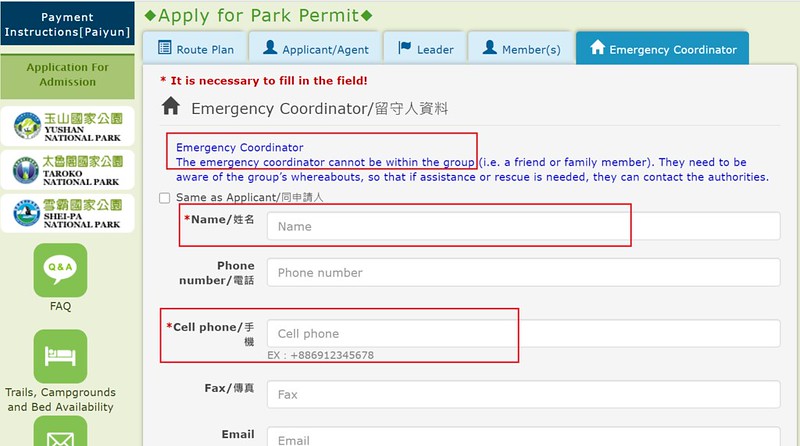How to Stay Alive and Get Found Soon While Getting Lost on the Trails in Taiwan?
For every outdoor enthusiast, learning what to do when getting lost is the thing you must learn. The mountains and trails in Asia are full of exciting trails to explore. But, you may find them very different from the mountains of your home country. The terrains and vegetation in Taiwan are also one of a kind. In this post, I'm going to share some very important hiking safety tips for you to have a safe hike in Taiwan. Please remember those Dos and Don'ts which might save your life.
Header image: hiking guide training. Image credit: Taiwan Mountain LOHAS Association 台灣山野樂活協會
Table of Contents:
- Dos and Dont's to Stay Alive When Lost in Taiwan Mountains
- Learn from Experience: 3 Cases
- Why We Should Not Follow the Stream in Taiwan: the Terrain, the Vegetation and the Climate
- Reminder: The 333 General Guideline
- Reminder: Other Tips to Increase Hiking Safety in Taiwan
- 10 Essentials on the Trails in Taiwan
- Acknowledgement and Resources
Exploring Taiwan? Save Time with the Ultimate 2025 Hiking Guide! Discover the top hikes in every city and county across Taiwan—all accessible by public transport (bus links available). We've spent 50+ hours researching the best trails and transit options, so you can skip the hassle and start your adventure!
Conclusion First: Dos and Don'ts to Stay Alive When Lost in Taiwan Mountains
Dos: Call for help, stay put if you can't find your original track.
Don'ts: DO NOT FOLLOW THE STREAMS.
Don'ts: DO NOT FOLLOW THE STREAMS.
Those things are crucial for hikers to survive in the mountains in Taiwan in case they get lost. According to the statistics by National Fire Agency, Ministry of the Interior in Taiwan 內政部消防署 from 2015 to June 2021, 38% of those reported rescues are hikers who couldn't find their way on the trails. Another 5% are hikers reported missing by their hiking mates or families. If we put those together, the percentage reaches to 43%.

In many countries, it is common sense to follow streams if hikers get lost in the wilderness. But, due to the unique landscapes, vegetation and climate of Taiwan, trying to follow streams here is very dangerous. It can also result in the rescue team taking much longer to find the missing person.
If hikers still want to try to find their way out, they should GO UP TO THE RIDGE, not down to the rivers. Going up will increase the chances to survive and be found alive. (This is for a number of reasons which I'll explore in more depth later.)
According to Captain Junyou Chen 陳軍佑, the chief of the Second District of Fire Bureau in Hsinchu County 新竹縣政府消防局第2大隊大隊長, hikers who had been missing for over two days were all found near the rivers or valleys. He also stressed the best practice for hikers who find themselves lost on the trails is to remain at the same location; if hikers can stay put, the rescue team can quickly find them within one day.
The next thing hikers need to do is to keep themselves warm.
Your support empowers Taiwan Hikes to create more FREE content, making your hiking adventures in Taiwan even more enjoyable. Click "Buy Me A Coffee" or use our affiliate links to support.
Brief Summaries of the Three Cases: Two Found Alive and One Tragedy
Over the past few years, there have been numerous incidents on the trails that caught our attention. Here I will examine three to see what they can teach us about surviving after getting lost. In two cases there was a happy ending, while the other hiker was not so lucky. Unfortunately we can't count on luck to get us out of trouble in the mountains.
Please note that I don't mean to blame anyone here. I myself have gotten turned around on the trails several times. This is something that can happen to all hikers whether newbie or experienced. I also made some silly mistakes on the trails that might not have ended well. I just hope we can learn the lessons from these people's experiences to prevent tragedies from happening in the future.
Case 1: Found by the River After Reported Missing for 7 Days
The first one is a motorcyclist who went missing on Gaotai Mountain Trail and got rescued after 7 days. You can read this story here: Off-road motorcyclist found weak and hungry after 6 days lost in wilderness.
What Happened
According to the news, this motorcyclist went biking with a friend on September 11, 2021, and he went to the off-road trail to Gaotai Mountain 高台山 on his own. Then, he left his bike and backpack to look for the triangulation stone on the peak. When he tried to get back to his bike, the trail was suddenly covered by fog.
He was wearing a pair of motorcycle boots that weighted 10 kg (22 pounds), and still managed to try to find his way out. He eventually got lost. The missing motorcyclist later told the rescuers that he felt thirsty, so he followed the sound of the streams and rested there.
While he was lying by the Jinping River, he didn't know Typhoon Chanthu was striking Taiwan, nor that there was a flash flood coming toward him. He was swept away by the suddenly swollen stream for 300 meters. Luckily, his heavy motorcycle boots got caught up in the rocks and saved him.

The rescue team sent out 300 personnel including his friends to look for this missing motorcyclist. At first, they thought he wouldn't walk too far with the heavy boots. Later, the rescuers used drone trying to find him. The drone finally showed him lying on the riverbed.
The straight line between his motorbike and the location where he was found was 2 km (1,24 miles), and the elevation loss is 1,000 meters (3,281 feet). There are several cliffs and steep slopes around here.
Result: This motorcyclist was found alive after going missing for 7 days.
Case 2: Found in the Valley After Reported Missing for 3 Days
A male hiker was reported missing near Mt. Sanzhui after climbing Mt. Baigu on September 20, 2021. On September 22, his body was found in a valley that is 700 or 800 meters deep (about twice the height of the Empire State Building) below his last known location by a volunteer trail runner.
Here is the footage shot by the trail runner, a Czech expat in Taiwan, Petr Novotny. (Scene of the deceased hiker's body has been blurred out.)
Result: Found deceased
Case 3: A Dutch Couple Trapped in Mountains in Wulai for One Evening
This happened in October 2018. A couple from the Netherlands decided to do a hike in Wulai which they had read about in the Lonely Planet guide. Things were great in the beginning, but the adventure took a wrong turn.
What Happened:
They got lost without enough food and warm clothes. It went dark much earlier than they were used to it getting dark in Europe. When they got lost, they tried to follow the river, and it became cold. They called their friends back home and asked them to contact the local police in Taiwan for help, but their cell phone battery died. They were trapped in the mountains in Wulai.
Lucky for them, their call for help was answered by a local hiking group nearby the next morning. The group, 新北市山岳協會 THMA, was one of the best hiking groups in Taiwan. They were able to locate the duo swiftly, gave them water and food, and took them back to the city.
They wrote a blog post about their ordeal in Dutch, but you can use Google Translate to read it. Please learn from their experience to make sure you will have a safe hike in Taiwan.
Result: Found alive
Why We Should Not Follow the Stream in Taiwan: The Terrain, the Vegetation and the Climate
First, as a small island about the size of the Netherlands, 70% of Taiwan is covered by rugged forest mountains with rivers cutting deep in the valleys.
Second, the highest peak in Taiwan is nearly 4,000 meters (Mt. Yu or Jade Mountain, 3,952 meters), and the climates range from tropical, subtropical, and temperate.
Third, the climate and natural vegetation vary with elevation. We often find tropical evergreens mixed with coniferous forests on the trails.
Finally, typhoons (tropical cyclones), heavy rainfall, and seasonal monsoon might bring considerable damage and severe flooding, which causes landslides, destroys the trails, and totally changes the landscape. For example, the motorcyclist almost got swept away by sudden flood.
One more thing, the daylight in Taiwan is between 5 am to 6 pm in summer, and 6 am to 5 pm in winter. We don't have daylight saving time in Taiwan.
Those are the possible scenarios when hikers who got lost tried to follow the rivers or tried to go up to the ridge.
- If hikers try to follow the streams, they won't know whether there are waterfalls or swirling water nearby, or when the sudden flash floods are coming.
- It's very easy for them to get exhausted. After climbing down to a stream, many hikers will be too exhausted to climb back out of the valley again.
- The temperature drops drastically near the streams, which makes it very easy for hikers to suffer from hypothermia. This will even lower their chance of survival.
- The vegetation along the rivers is much thicker and the volume of the running water will cover over hiker's distress calls. This makes it more difficult for rescue teams to spot and hear the missing hikers.
- In the event that a drone or helicopter is used, it will be much easier for the rescue team to spot the missing hikers if they can climb up to the ridges.
- It might be easier to get a mobile network if missing hikers stay on the ridge. This will also increase the chance to send out distress calls.
- Most hiking trails are on or along the ridges in Taiwan, which might increase the chance for hikers to find their way back.
The Best Solution to Get Found Quickly: Stay Put
From the map below, we can see there are many tracks in the area where the motorcyclist went missing. Those tracks are from the rescue teams spending days trying to find him. Thank mro.adventure 山、水與浪人 for giving me permission to use this image. If the motorcyclist had stayed put after realizing he was lost, he could have been found much sooner.
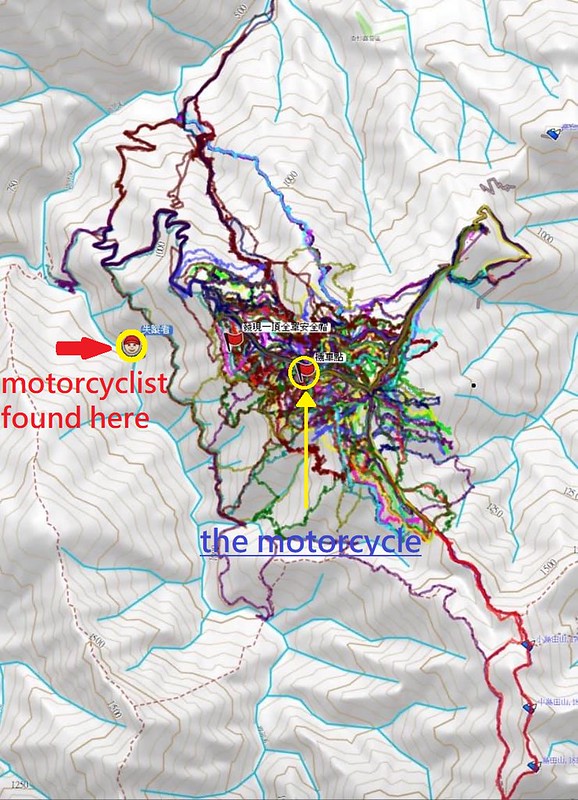
Some people might argue that the motorcyclist was found by the drone because he stayed in the exposed riverbed. That might be true, but given the other risks associated with rivers here, it is still a far safer bet to head for the ridgelines.
Here is a drone video from the rescue team. I checked the video at least twice and I finally saw a person in black lying on the riverbed. I'd also like to thank Haway Studio 有一種哈味 for giving me the permission to share this video. You can start the video at 3:05.
Reminder: The 333 General Guideline
The 333 General Guideline: hypothermia 3 hours, terminal dehydration 3 days, starvation 3 weeks
This is a pithy memory aid taught in the hiking community in Taiwan to help hikers remember what to do. It is estimated that humans may survive 3 weeks without food and 3 days without water. However, humans may die within 3 hours if their body temperature continues to drop.
Therefore, the most crucial thing to do while waiting for rescue is to avoid hypothermia. Wasting too much effort on the trail makes it difficult to maintain our body temperature before the rescue team finds us alive. Again, please try to stay calm and stay warm.
I did research about how long it takes for people to die from hypothermia. The result is surprising. It may take less time than 3 hours for people to freeze to death, depending on how cold it is. You can also check out Mayo Clinic's article about hypothermia for more details.
The point here is staying warm is the first thing we need to worry about when getting lost on the trail here, not finding water.
This is even true in summer. I went for a hike near Taipei in August and it started raining after a few hours. I became soaking wet and I started shivering.
Reminder: Other Tips to Increase Your Hiking Safety in Taiwan
- Always let people know WHERE we are going to hike and WHEN we are planning to come back. So, they can help us call for help if we do not return.
- Never leave without the backpack.
- If you must move to find a safer location then leave marks to aid the rescue team.
- Wear bright colors. Before your hike, take photos of yourself or your group. Share the photos with your emergency coordinator or your friends who know your hiking plan very well. If you go missing, your friends can send your images to the rescue team to recognize you.
-
Emergency numbers:
With a good mobile network: dial 110 or 119
With a patchy mobile network: dial 112
No mobile network: try to dial 110 or 119 first, then 112
Note: 110 is the emergency number to reach the police in Taiwan. 119 is the emergency number to reach the fire department. 112 is a common emergency telephone number. But many hikers report saying 112 cannot be connected in Taiwan. Please call 110 or 119 when you need help on the trails instead.
Have an Emergency Coordinator Who Knows Your Hiking Plan Well
In Taiwan, we have a system called Emergency Coordinator 留守人. When you apply for a national park permit to do 100 Peaks hike, you need to fill in your emergency coordinator's contact numbers. You can see my post on Qilai Nanhua hike. I also suggest adapting this practice to every hike you do.
This person can't be a random person. This person must know your hiking plan very well.
When we did the Qilai Nanhua hike, Acer was our emergency coordinator. I sent SMS messages to him whenever I could and let him know where we were and how we were.
If you travel to Taiwan to do a 100 Peaks hike, you should let your emergency coordinator from your home country fully understand your plan. This person needs to call 110 or 119 for help if she or he hasn't heard from you for a long period of time.
As to how to find mobile coverages on the trails, you can find those locations on the maps at the trailheads of most 100 Peaks trails. Or download the PDF to see the locations from the Forestry Bureau's website.
You will also find the marks like the following on the trails. Please note sometimes you might still have a hard time sending out or receiving messages at those locations.
10 Essentials on the Trails in Taiwan
- First aid kit and personal medications.
- Navigation: map, compass, and GPS. Download the GPS app and learn how to use it before your hike.
- Raincoat and rain pants are a must.
- Insulation or warm clothes.
- Illumination: a flashlight, lantern, or headlamp. A headlamp is a must when hiking in Taiwan. And a portable powerbank or spare batteries.
- Fire: matches, lighter, or fire starters.
- Repair kit: duct tape and multifunctional tool.
- Nutrition: at least an extra day's supply of no-cook food.
- Hydration: water, water filter or purification.
- Emergency shelter: a tent or a tarp that can keep you dry. If you don't have those things with you when traveling in Taiwan, at least bring a big garbage bag with you.
Acknowledgements and Resources:
I want to thank Acer Lee, Taiwan Trails and Tales, and OutRecording
for their insights and discussions about those issues.
Acer is an ultrarunner and a hiking guide for years. He has relentlessly taught us the survival skills on the trails when hiking with us. He also speaks fluent English. The guides from my favorite hiking group, Taiwan Mountain LOHAS Association, also teach me a lot about things that I need to know on the trails.
Ami from Taiwan Trails and Tales and Glenn from OutRecording share their valuable knowledge and experience from their home countries, the UK and the U.S.A, respectively. They are also very kind to share their hiking experience in Taiwan with me.
I want to thank mro.adventur 山、水與浪人 for giving me permission to use the image of tracks when they tried to locate the missing motorcyclist. You can check out their website to see their outdoor adventures in Taiwan.
I want to thank Haway Studio Haway Studio 有一種哈味 for giving me permission to share the drone video. If you are also into backpacking on a motorbike, please check out Haway Studio's YouTube channel. They have many amazing videos about nature and travel in Taiwan.
The following is the list of the information I got to finish this post. Most are written in Chinese.
【戶外百科】迷途終結站
【戶外百科】迷路怎麼辦?
靠北登山大小事: 宣導登山安全之懶人包、一頁式圖片等,歡迎轉傳分享。
Climate of Taiwan
事故救援統計
【戶外百科】迷途終結站
【戶外百科】迷路怎麼辦?
靠北登山大小事: 宣導登山安全之懶人包、一頁式圖片等,歡迎轉傳分享。
Climate of Taiwan
事故救援統計

